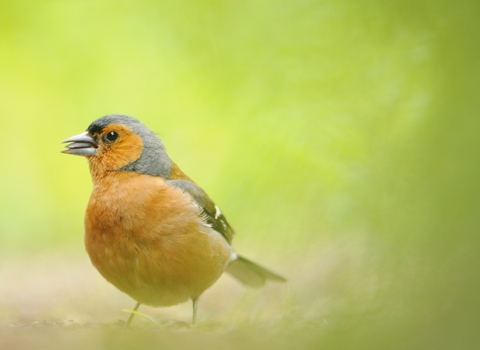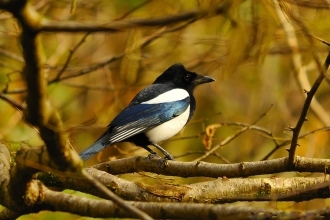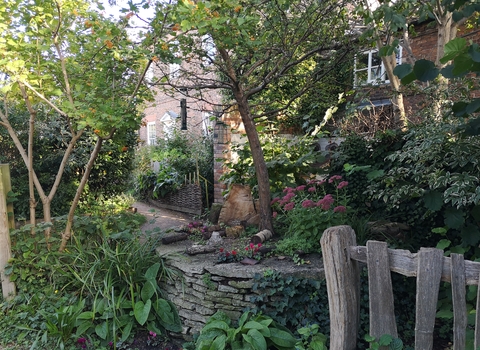Help the birds in your garden
Garden birds do have a lifeline- your garden. Together, the 16 million gardens across the UK form an area for wildlife larger than all our National Nature Reserves. This patchwork of habitats helps our wildlife to move about freely, forming a vast living landscape that links urban green spaces with the wider countryside. Encouraging birds to visit your garden is easy and a great way to help!
Click Here for tips on how to encourage wildlife into your garden.
Help the birds in your area
We manage over 28,000 acres of reserves which are havens for rare and threatened species and habitats. We give wildlife a voice, campaigning on wildlife issues and focus on protecting local wildlife.
The best way to help us is through membership. Our members are critical to all the work we do protecting local wildlife - click here to learn more about membership and how you can get involved.
There are a whole range of other ways to help. If you want to find out more about how you can help us help local wildlife please visit the Support Us page.
Which birds am I likely to see in my garden?
Typically, males are more distinguishable than females. Click through to browse the species pages for more details about these birds. The UK's 10 most common garden visitors are:
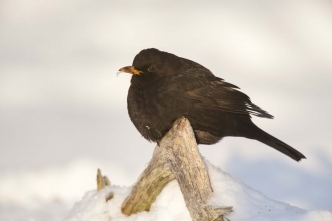
Blackbird (c) Mark Hamblin/2020 Vision
Males (pictured) are black with a yellow bill and yellow ring around the eye. Females and juveniles are dark brown.
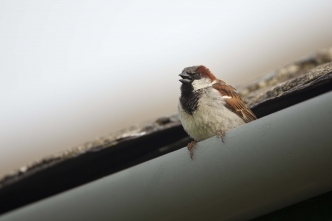
(c) Mark Hamblin/2020Vision
Males (pictured) are streaky brown above and grey below, with chestnut-and-white wings, a black bib and a grey cap. Females and juveniles are duller.
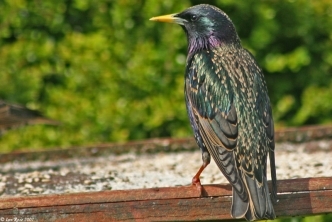
(c) Ian Rose
Adults (pictured) are oily-black with a purple-and-green sheen, and tiny, beige spots in winter. Juveniles are dark grey-brown.
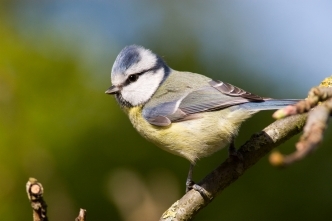
(c) Dave Kilbey
Greeny-blue above and yellow below, with a blue cap, white cheeks, black eyestripes, and a blue tail and wings.
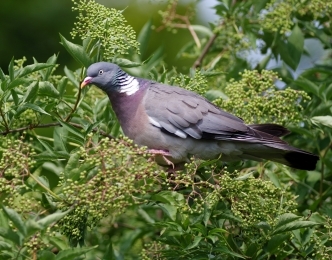
(c) Gillian Day
Grey above, with a pink breast, white neck patch and white patches on the wings.
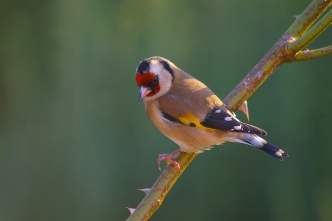
Goldfinch (c) Neil Aldridge
Gingery-brown above and pale below, with black-and-yellow wings, a black crown, white cheeks and a red face.
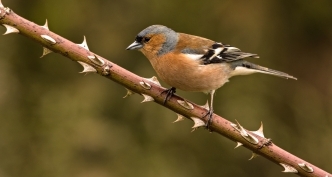
(c) Bob Coyle
Males have blue-grey crowns, brown backs and pink breasts. Females are brown, with white shoulder patches and wingbars.
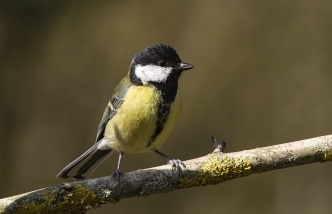
Great tit (c) Bob Coyle
Green above and yellow below, with a black head, white cheeks, and black stripe down its breast.
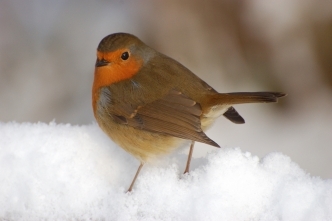
(c) Stewart McDonald
Brown above, with a white belly and red breast. Juveniles are mottled gold and brown.
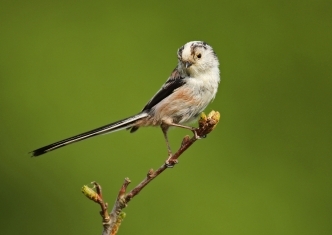
(c) Jon Hawkins
Black, white and pink above, and pale pink below, with a long, black-and-white tail, a white head, and a broad, black stripe above the eye.
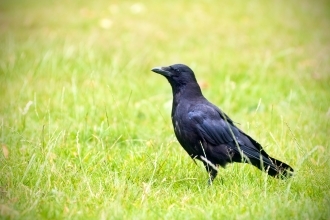
(c) Chris Maguire
The all-black Carrion Crow is a mostly solitary bird, it has a black bill and bare legs. It can be seen almost everywhere.
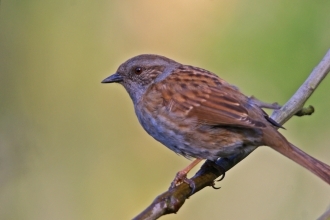
(c) Neil Aldridge
A small grey/brown bird, similar in size to a sparrow.
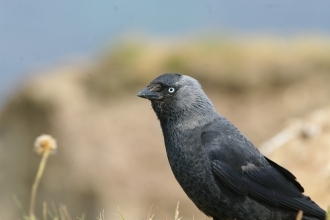
(c) Gillian Day
The smallest of the crow family the jackdaw is a noisy, communal bird with a pale eye and a grey nape.
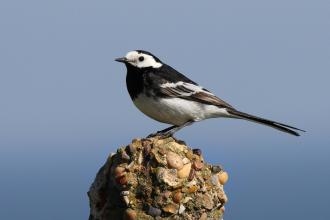
(c) Margaret Holland
A small, darting black and white bird with an inescapable twitching tail.
A medium-sized member of the crow family with striking black and white plumage.
Other Species
Other species that visit gardens include carrion crows, magpies, jackdaws, collared doves, dunnocks, wrens, song thrushes, greenfinches, coal tits, swifts, house martins, and green and great spotted woodpeckers. Find out more about these birds on our species explorer.
Which rarer birds might visit?
If you live close to countryside, you might find traditional farmland or woodland species visiting, particularly in winter when food is scarce. Look out for chiffchaffs, siskins, yellowhammers, bullfinches, nuthatches, treecreepers, lesser redpolls, tawny owls, sparrowhawks, jays, cuckoos, mistle thrushes, blackcaps, goldcrests and pied flycatchers. Winter garden visitors may also include migrant bramblings, waxwings, redwings and fieldfares. If you have a pond in the garden, you might find herons and other waterbirds popping in.
How can I encourage birds to my garden?
Whether you have a small, city patch or acres of fields, you can encourage birds to visit your garden:
- Put out suitable food on a birdtable and in feeders – even one that sticks to a window will do the trick!
- Birds eat different things: try seeds for sparrows and finches, fat balls for tits, and fruit and worms for thrushes and robins. As long as it’s not mouldy, you can also pop out leftovers like fruit cake, unsalted nuts, and over-ripe apples and pears
- The amount of food you need to supply will vary depending on the season and weather; try to put out only what will get eaten, so there’s nothing left to go off
- Don’t forget to provide fresh water (in saucer or even bin lid will do) as well, and make sure you clean feeders and tables regularly to avoid disease
- Provide places for birds to nest and rest safely by planting native trees and shrubs, or putting up nest boxes

